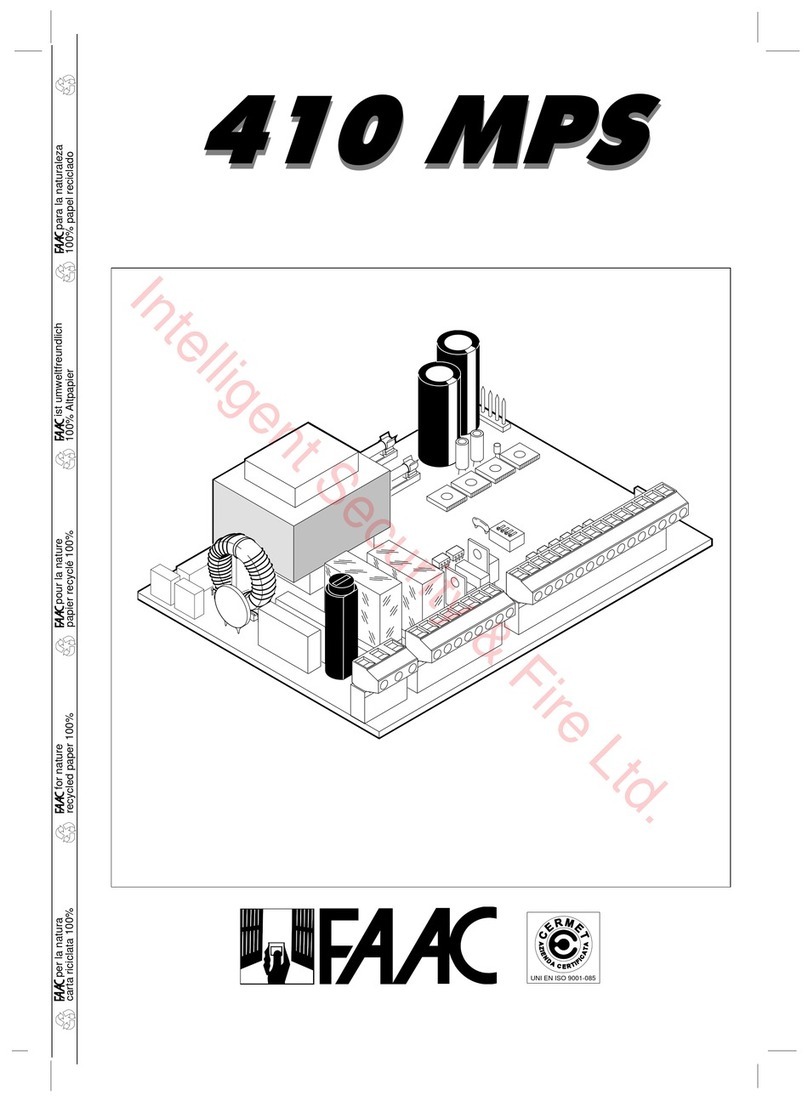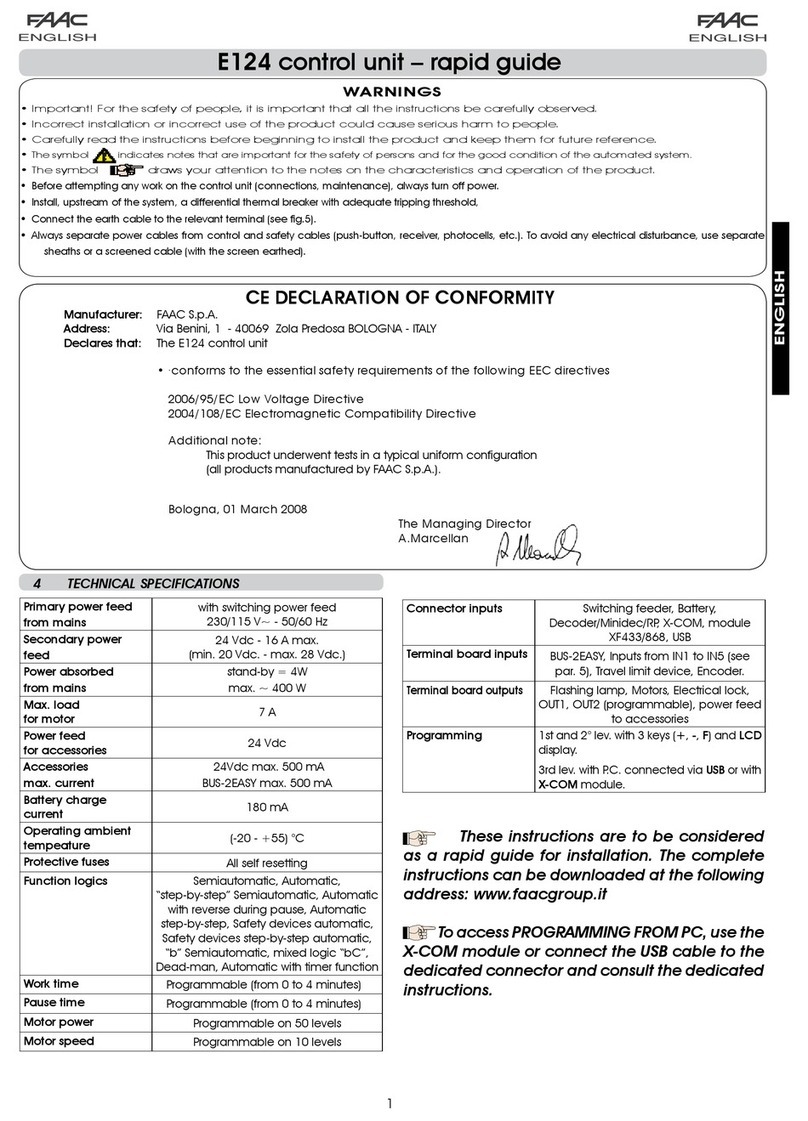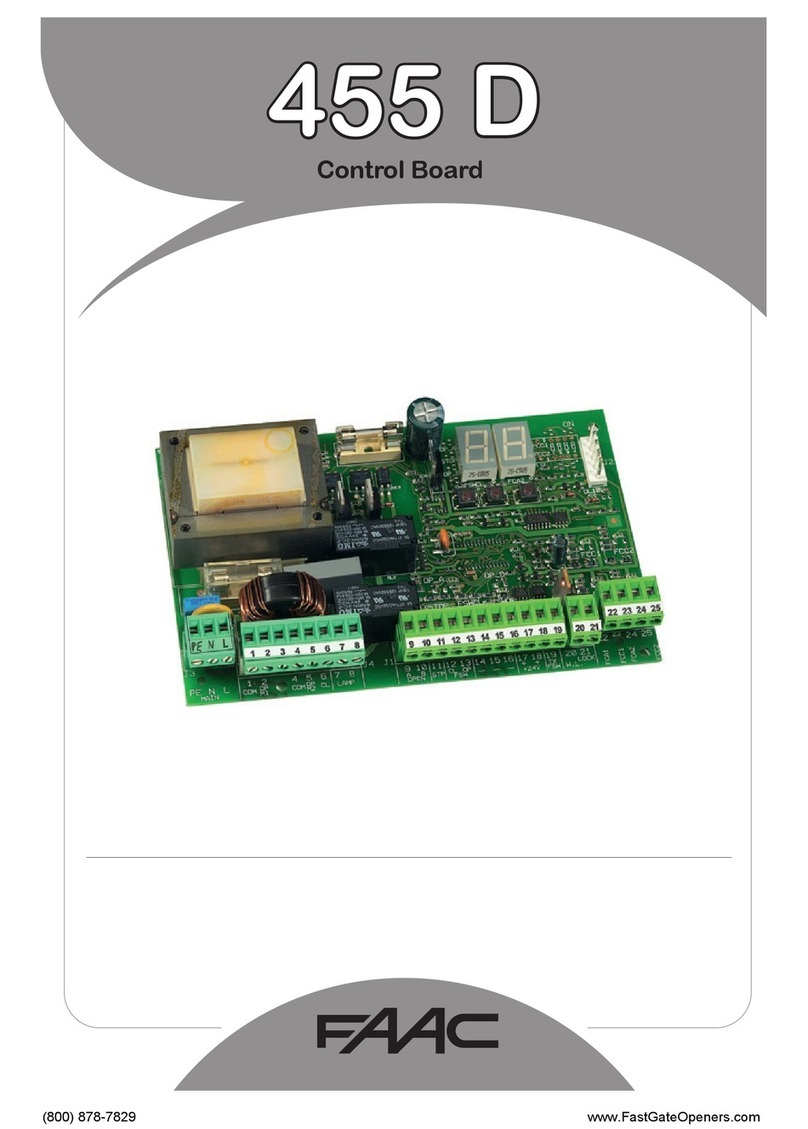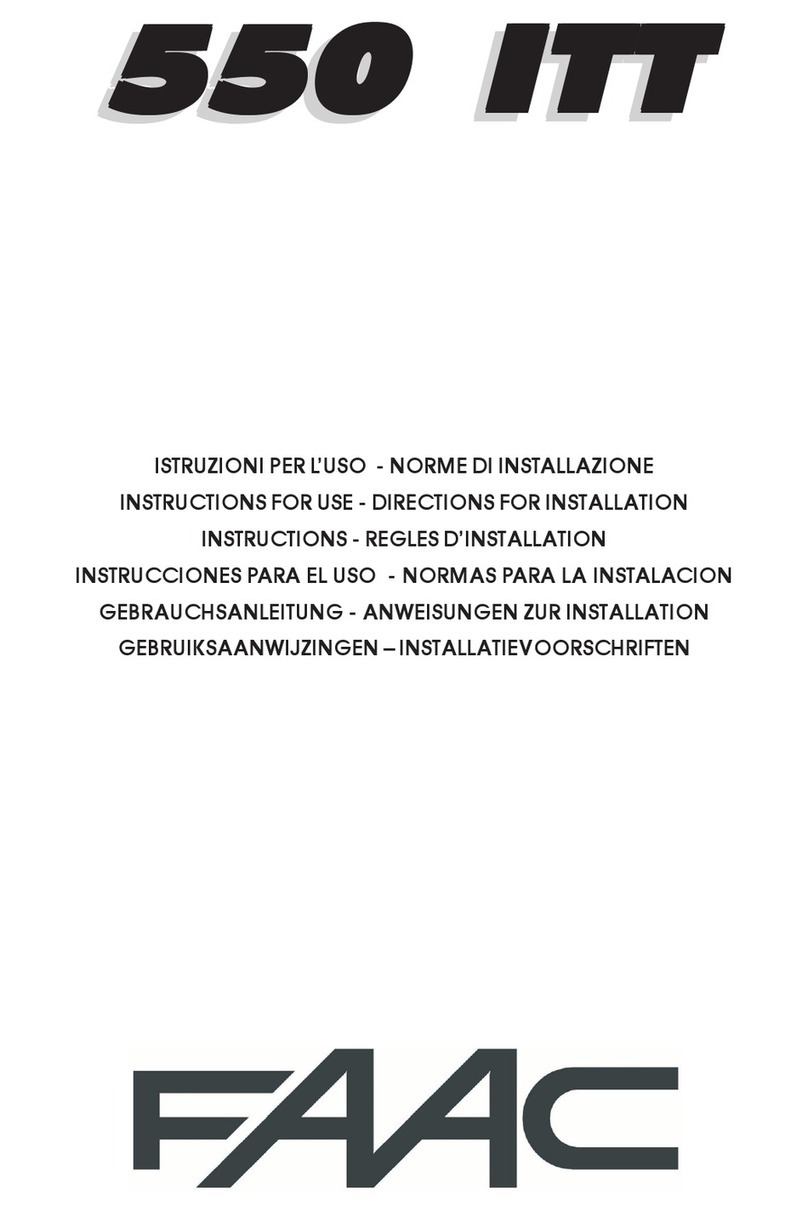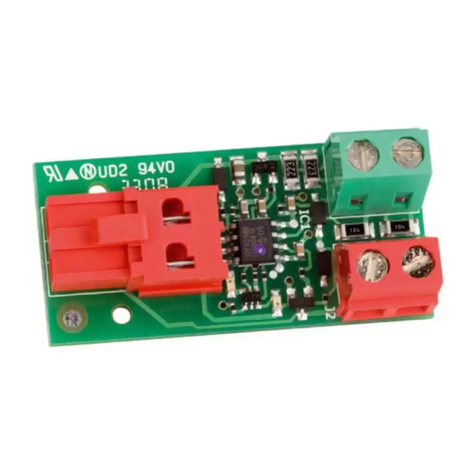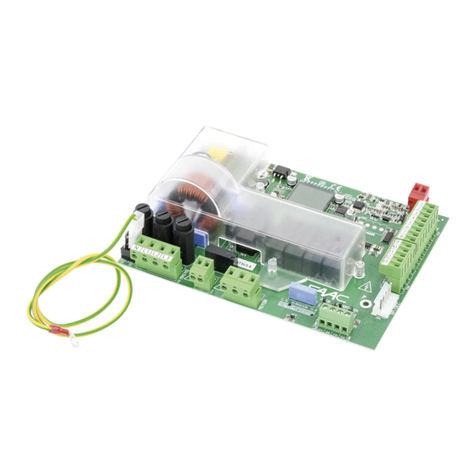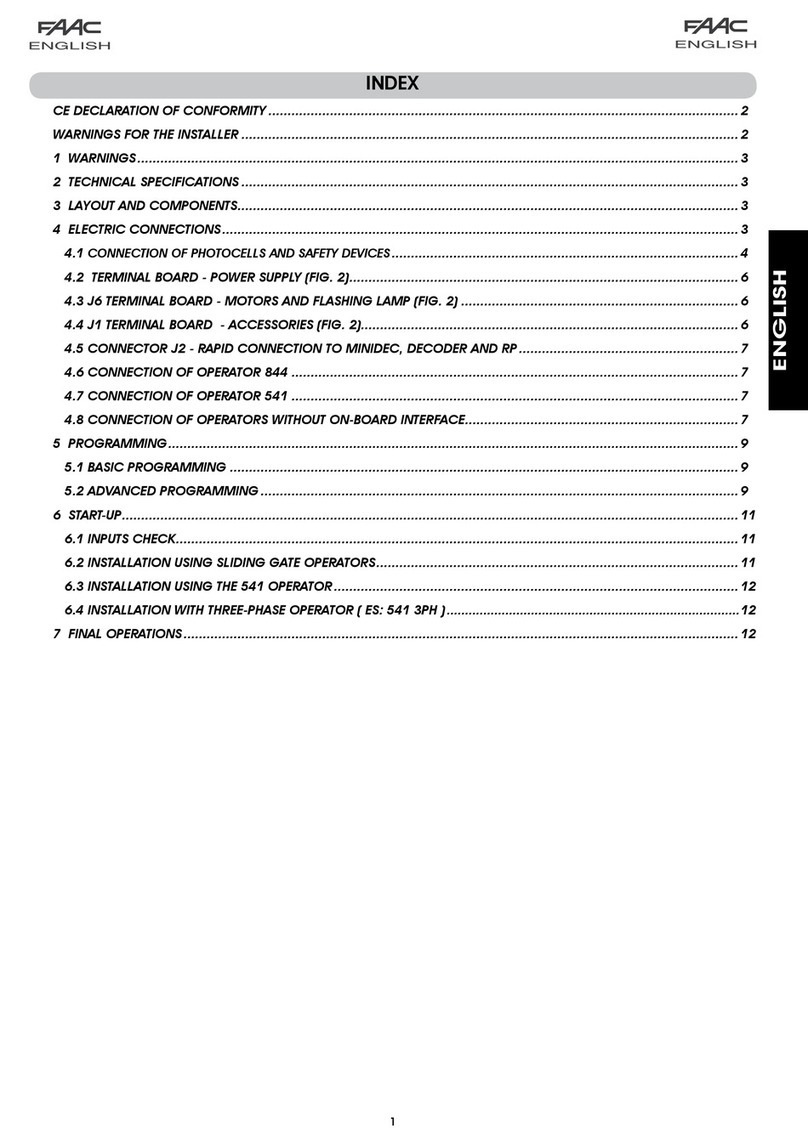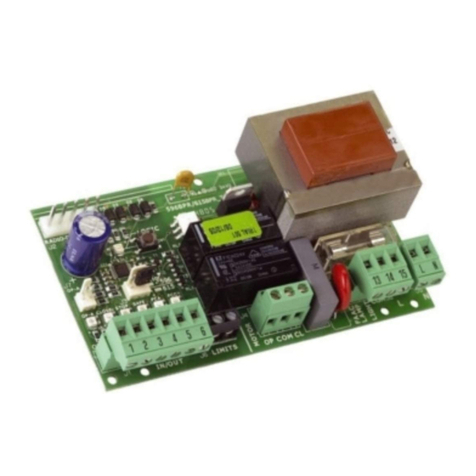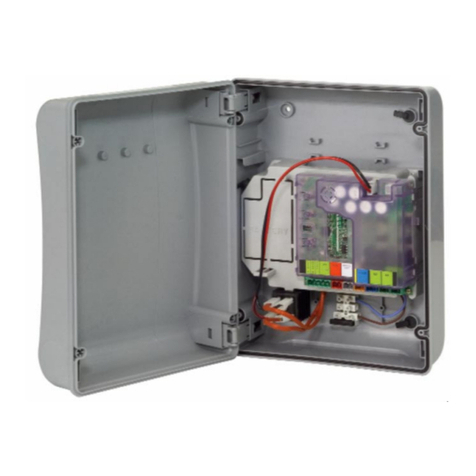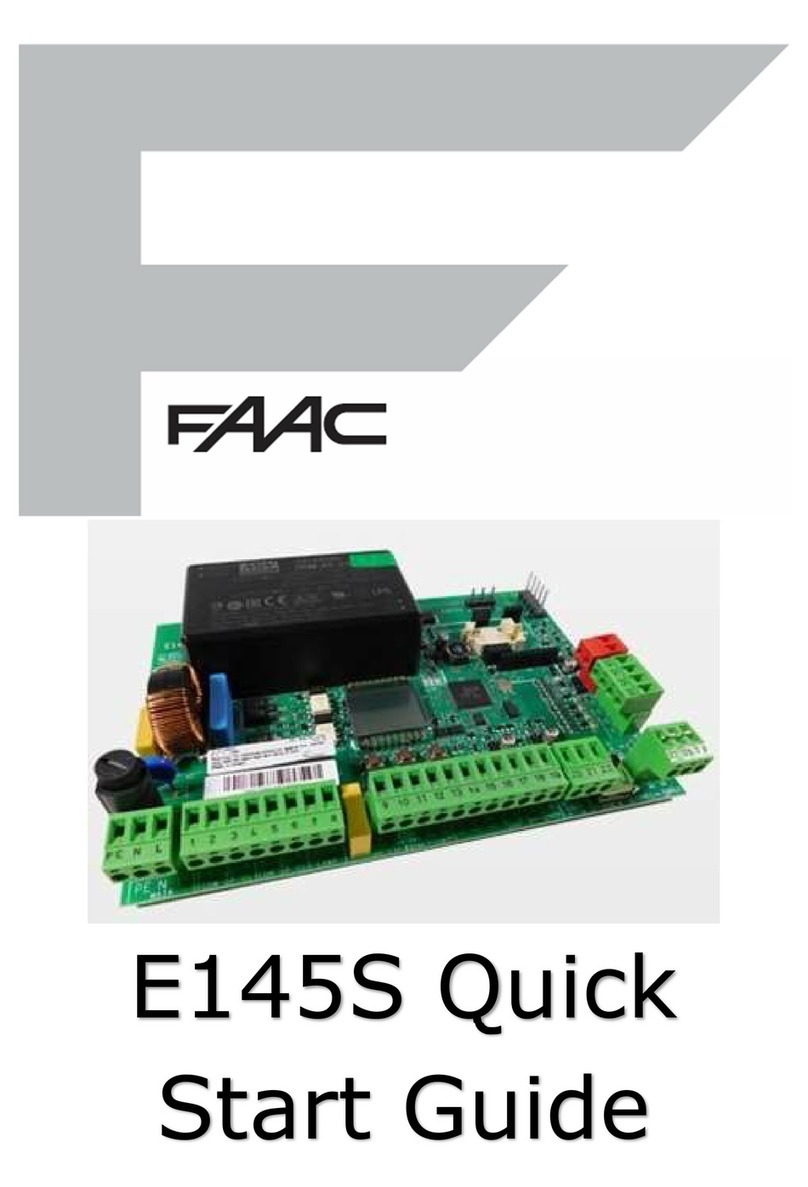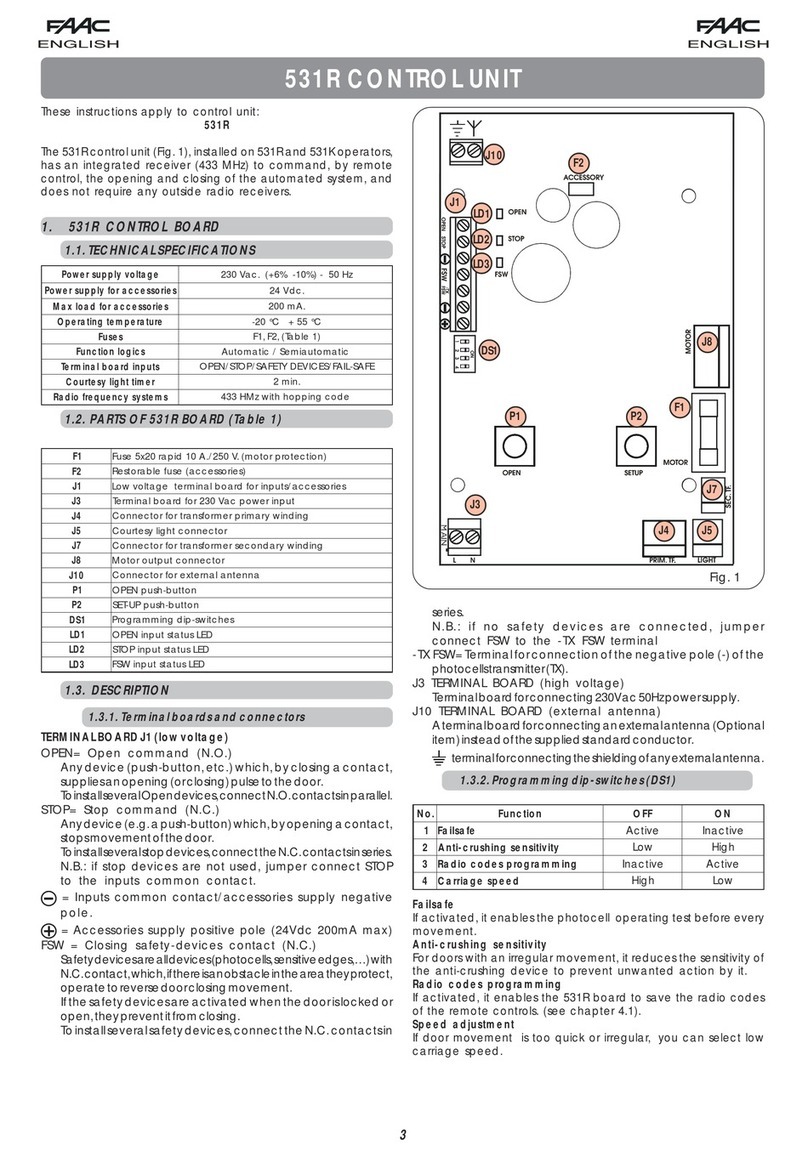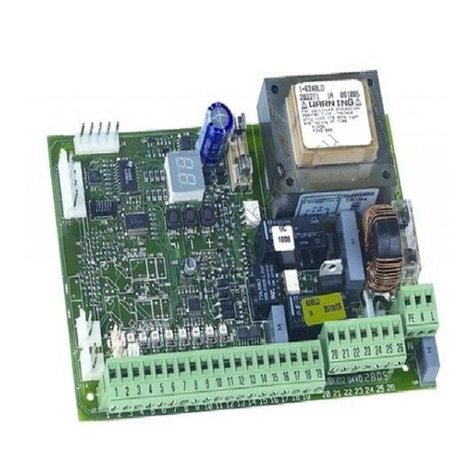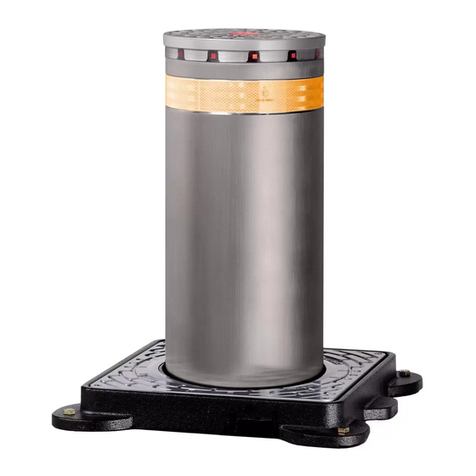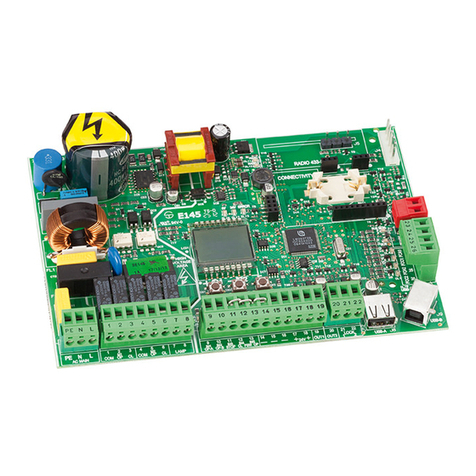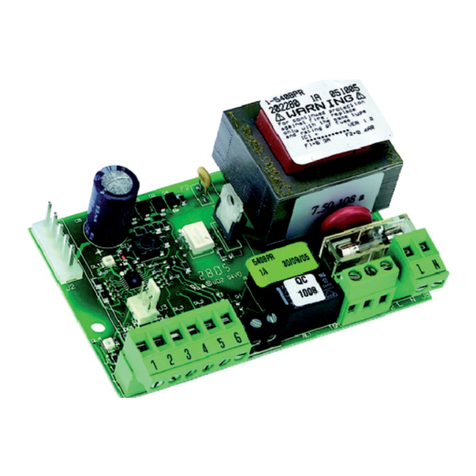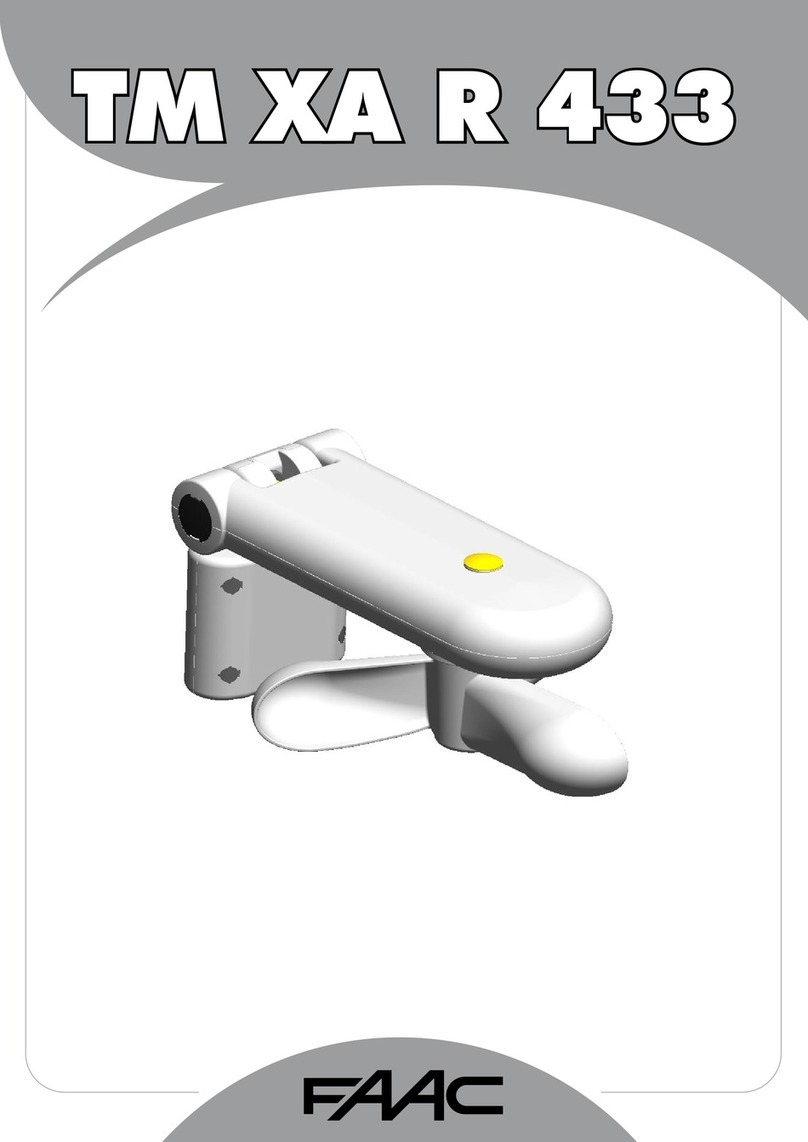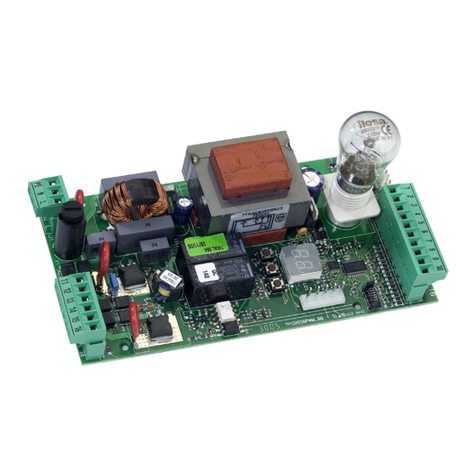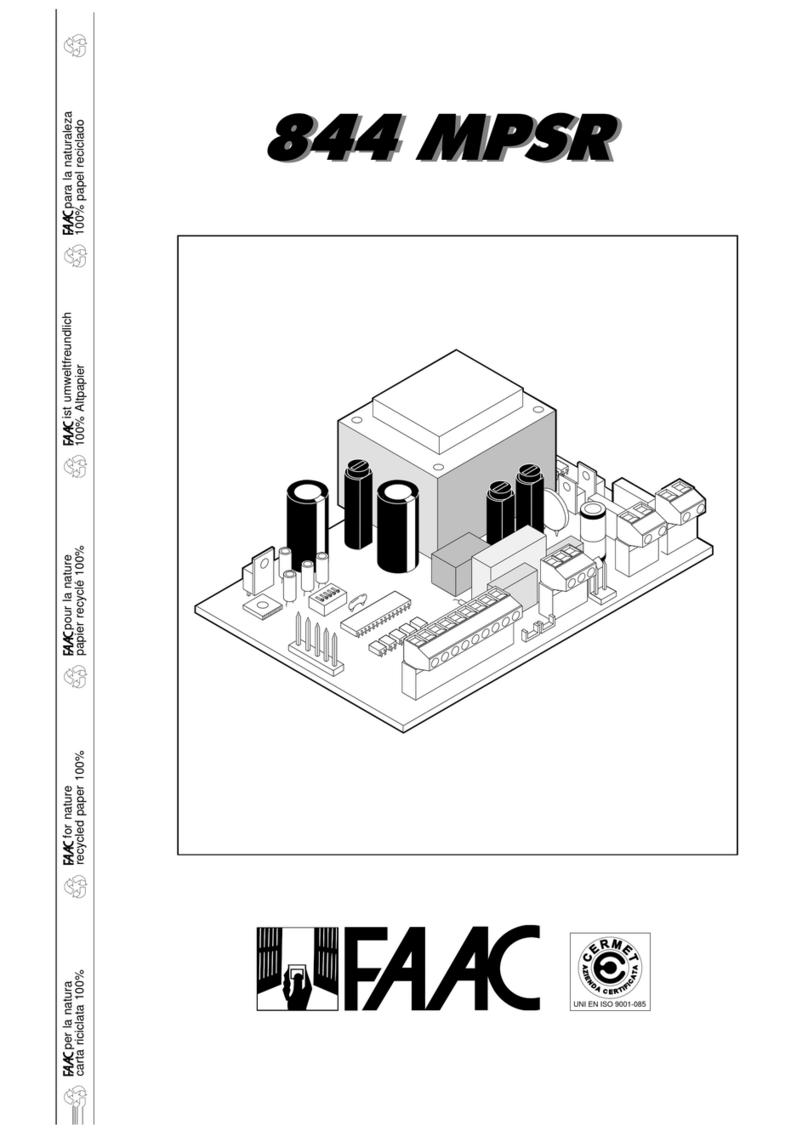8
Example of sequence of states displayed starting from barrier
closed:
In the sequence, states 01 and 05 are not shown; these
correspond to pre-flashing at opening and at closing,
respectively.
00 Closed 02 Opening
04 Pause (if present)
03 Open
06 Closing
5.2. MODIFICATION OF THE PRE-SETTING
The modification of the
dF
parameter enables you to
automatically load 4 different configurations modifying all
programming values at every level with preset values.
This possibility is a convenient starting point for subsequent
rapid ‘fine tuning’ of the 624 BLD for functioning with 4
different types of installation.
4 PRE-SETTINGS may be selected:
01
Default FAAC for barriers
02
Default RESERVED FOR FAAC
03
Default for the FAAC CITY 275 H600 and H800 range
04
Default for FAAC CITY 275 H700 K
To implement loading of the values of one of the 4
pre-settings, select the required pre-setting (
01
,
02
,
03
,
04
) and exit 1st level programming.
EXAMPLE: selecting
01
and exiting 1st level programming, all
the FAAC default values which can be found in the 1st, 2nd
and 3rd level tables in the “Default” column are loaded. The
624 BLD is therefore configured for movement of a barrier.
THE LOADING OF A PRE-SETTING CANCELS ALL
THE MODIFICATIONS PREVIOUSLY MADE AT ANY
PROGRAMMING STEP. IF YOU DO NOT WISH TO
LOAD ANY PRE-SETTING, LEAVE THE
dF
STEP
AT
00
.
The
dF
,step, unlike the others, does not store
the value selected but returns to show
00
again, as standard condition.
It is therefore not possible to identify what pre-setting was
previously set.
If you do not wish to load any pre-setting, ALWAYS leave
the
dF
step at value
00
and move on to the following
programming step.
Ensure that you load the desired default and
exit 1st level programming BEFORE modifying
other steps, in order to avoid deleting all the
modifications made.
To learn more about the specifications of each pre-setting,
refer to chapter 10 on page 15.
5.3. SETUP and BUS SYSTEM CONTROL
Each time you install one or more BUS accessories (as
explained in chapter 4.3) these must be stored on the
board.
Storage is performed as follows:
- enter the first programming level as explained in chapter.
5.1;
- at the
bu
programming step, release programming
push-button Fand press push-button + for 1 second.
The display shows
--
for an instant and then returns to
the standard condition indicated in fig. 10. The storage
procedure is finished.
The bu programming step also has the function of displaying
the status of the BUS technology accessories. Figure 9
indicates the exact correspondence between the segments
of the display and the inputs.
Fig. 9
Segment ON = closed contact
Segment OFF = open contact
FSW CL = BUS photocells
closing
OPEN = BUS photocell
pulse generators OPEN
NOT USED
The configuration for correct operation of
the automated system should show the three
horizontal segments ON as in figure 10.
In case of engagement of the closure photocells,
the upper and lower segments switch off, leaving
the central segment on, as in figure 11.
In case of engagement of the PULSE GENERATOR
OPEN pair, the corresponding vertical segment
switches on for the engagement time of the pair,
as illustrated in figure 12.
Fig. 10
Fig. 11
Fig. 12
The PULSE GENERATOR OPEN pair of photocells, if engaged,
commands opening of the application and prevents its
closure until it is released.
If no pair of BUS photocells is present on the
system, the
bu
programming step will still
show the display in figure 10.
TheBUScommunicationsystemuses a self-diagnosticfunction
able to supply reports of incorrect connection or of erroneous
configuration of the BUS accessories.
The display shows the cc signal FLASHING
when a SHORT-CIRCUIT is present along
the BUS line, as in figure 13. Check the
connections made (chapter.4.3).
The display shows the Er message
FLASHING, as in figure 14, if more than
one pair of photocells should have the
same address.
Fig. 13
Fig. 14
In this latter case, check all the addresses set on all the
photocells installed, referring to chapter 4.3.
ENGLISH












